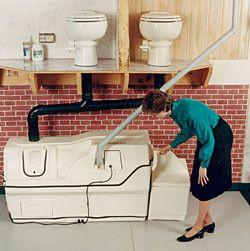
Composting vs Dry Flush Toilets: Finding Your Ideal Choice
Let's face it, traditional toilets are water guzzlers. But fear not, eco-conscious commode connoisseurs! There's a world of waterless options waiting to be explored. Today, we'll be diving into the delightful debate of composting vs dry flush toilets. Buckle up and get ready to learn how your waste can become your garden's gold (or, well, something close to it).
Understanding Composting and Dry Flush Toilet Systems
What is a Composting Toilet?
A composting toilet is an eco-friendly alternative to traditional flush toilets. It works by decomposing human waste into nutrient-rich compost that can be used as fertilizer. These toilets don't require water for flushing, making them ideal for off-grid living or areas with limited water resources.
Composting toilets come in different types, including self-contained units and centralized systems. They use natural processes, like aeration and heat, to break down waste into compost. Proper maintenance, such as adding a bulking agent and ensuring adequate ventilation, is crucial to prevent odors and keep the system functioning correctly.
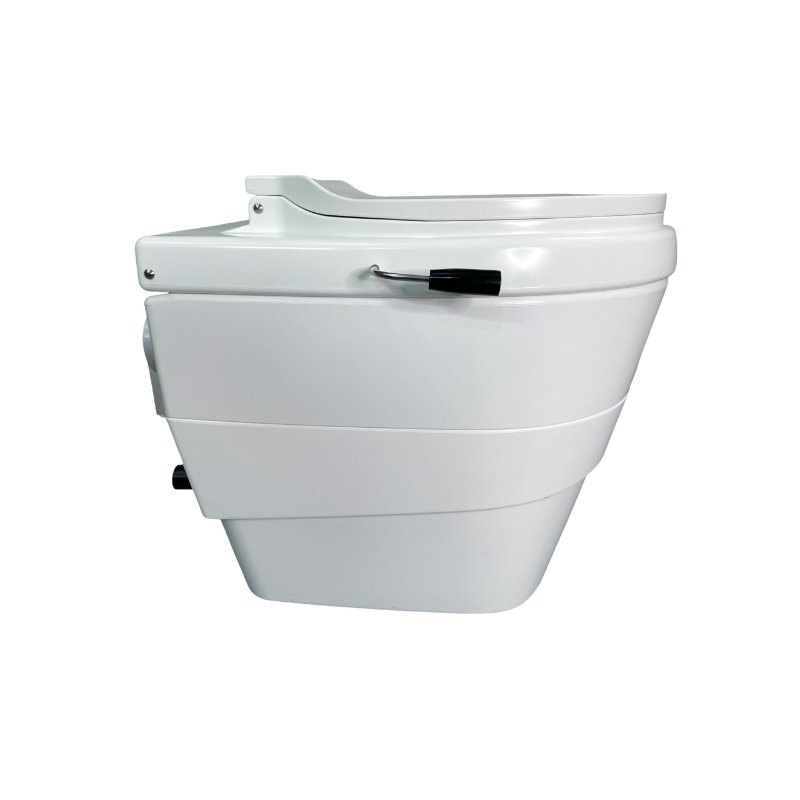
How Does a Dry Flush Toilet Work?
A dry flush toilet is a waterless system that separates liquid and solid waste. It uses a small amount of air or vacuum to flush waste into separate containment areas. The solid waste is then dehydrated and reduced to a smaller, more manageable volume, while the liquid waste is typically drained into a separate tank or leach field.
Unlike composting toilets, dry flush toilets don't involve any decomposition process.
They're designed for easy installation and maintenance, making them a popular choice for tiny homes, RVs, and boats. However, they still require regular emptying and may have higher upfront costs compared to composting toilets.
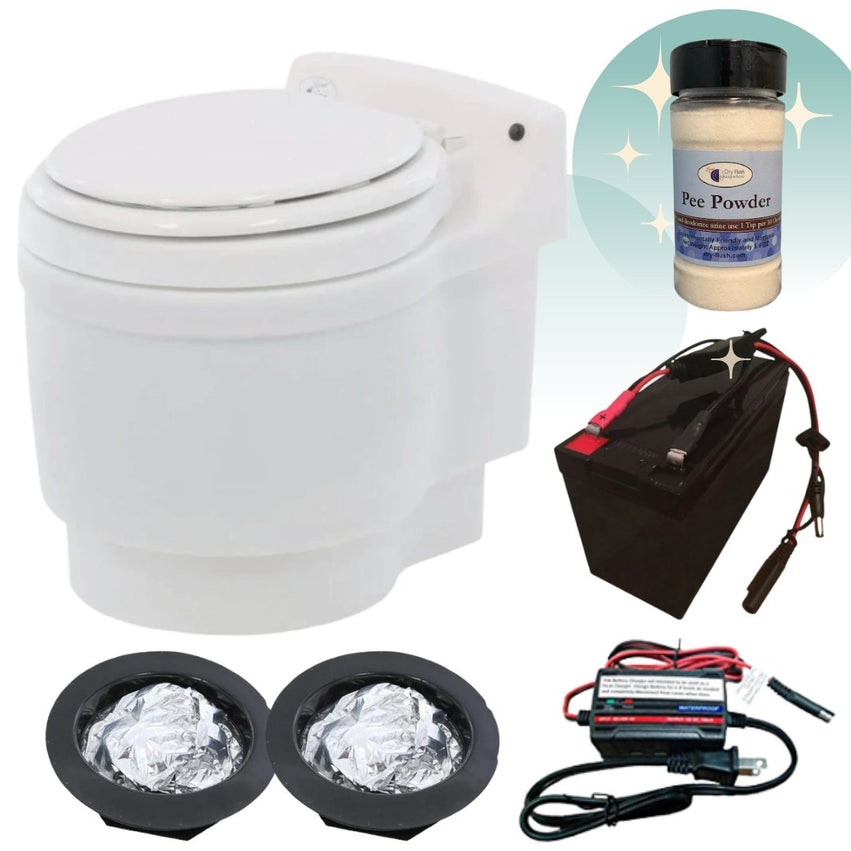
With their unique advantages and considerations, both composting and dry flush toilets offer viable alternatives to traditional flush toilets, especially for tiny home owners and off-grid living enthusiasts. Understanding the differences between these systems is crucial in finding the ideal choice that aligns with your lifestyle and priorities.
Composting vs Dry Flush Toilets: Key Differences
Installation and Space Requirements
Composting toilets typically require more space and specific ventilation setups compared to dry flush systems. They need adequate room for the composting chamber and proper airflow to facilitate the decomposition process. On the other hand, dry flush toilets have a more compact design and can be installed in tighter spaces, making them a popular choice for tiny homes and RVs.
Maintenance and Odor Control
Proper maintenance is essential for both composting and dry flush toilets to prevent odors and ensure efficient operation. Composting toilets require regular addition of a bulking agent, like coconut coir or peat moss, and periodic removal of finished compost. Dry flush toilets involve emptying the solid waste container and maintaining the dehydration system.
While both systems can be designed to minimize odors, composting toilets may require more diligent maintenance to prevent unpleasant smells. Dry flush toilets generally have an advantage in odor control, as the separation of liquid and solid waste can help reduce odors.
Environmental Impact
Composting toilets are often lauded for their eco-friendly nature, as they transform human waste into valuable compost that can be used as fertilizer. This process helps reduce the strain on municipal sewage systems and water resources. Dry flush toilets, on the other hand, still generate solid waste that needs to be disposed of properly, although they are much more water-efficient than traditional flush toilets.
Understanding these key differences is crucial when deciding between a composting or dry flush toilet system, as it can impact the overall user experience, maintenance requirements, and environmental footprint. Carefully evaluating these factors can help tiny home owners and off-grid enthusiasts make an informed choice that aligns with their priorities and lifestyle.

Installation and Maintenance
Household Size and Usage
The number of people using the toilet and the frequency of usage are important factors to consider. Dry Flush Toilets have a limited amount of flushes which may be better suited for smaller households or occasional use, as they have a limited capacity for waste before requiring a refill. Composing Toilets, on the other hand, come in various sizes and can handle higher usage levels, making them a better choice for larger households or situations with frequent visitors.
Climate and Location
Climate and location can influence the performance and suitability of composting and dry flush toilets. Composting toilets work best in warm, well-ventilated environments, as the decomposition process requires heat and airflow. In colder climates or tightly sealed spaces, composting can be hindered, leading to potential odor issues. Dry flush toilets are less affected by temperature and ventilation conditions, making them a more versatile option for various climates and locations.
Personal Preferences
Personal preferences and attitudes towards waste management can also play a role in choosing between composting and dry flush toilets. Some individuals may feel more comfortable with the idea of composting human waste, viewing it as a sustainable and natural process. Others may prefer the more straightforward and familiar approach of dry flush toilets, which separate waste without the decomposition aspect.
Accounting for household size and usage patterns, climate and location, and personal preferences can help ensure that the chosen toilet system aligns with individual needs and priorities. Taking the time to evaluate these factors can lead to a more satisfying and hassle-free experience with either a composting or dry flush toilet in a tiny home or off-grid setting.
Pros and Cons of Composting Toilets
Advantages of Composting Toilets
- Water Conservation: Composting toilets don't require water for flushing, making them an eco-friendly choice and ideal for areas with limited water resources or off-grid living situations.
- Sustainable Waste Management: The composting process transforms human waste into nutrient-rich compost that can be used as a natural fertilizer, reducing the strain on municipal sewage systems and promoting sustainability.
- Low Operating Costs: Once installed, composting toilets have minimal ongoing costs, as they don't require water or complex plumbing systems.
Disadvantages of Composting Toilets
- Maintenance Requirements: Proper maintenance is crucial for composting toilets, including adding a bulking agent, ensuring adequate ventilation, and periodically removing finished compost. This can be time-consuming and require diligent attention.
- Potential Odor Issues: If not maintained correctly, composting toilets can develop unpleasant odors due to the decomposition process. Proper ventilation and maintenance are essential to prevent odor problems.
- Limited Capacity: Composting toilets have a finite capacity for waste before requiring maintenance or emptying, which may not be suitable for larger households or situations with frequent use.
While composting toilets offer numerous advantages, such as water conservation, sustainable waste management, and low operating costs, they also come with unique challenges, including maintenance requirements, potential odor issues, and limited capacity. Understanding both the benefits and drawbacks can help tiny home owners and off-grid enthusiasts make an informed decision on whether a composting toilet is the right choice for their specific needs and lifestyle.
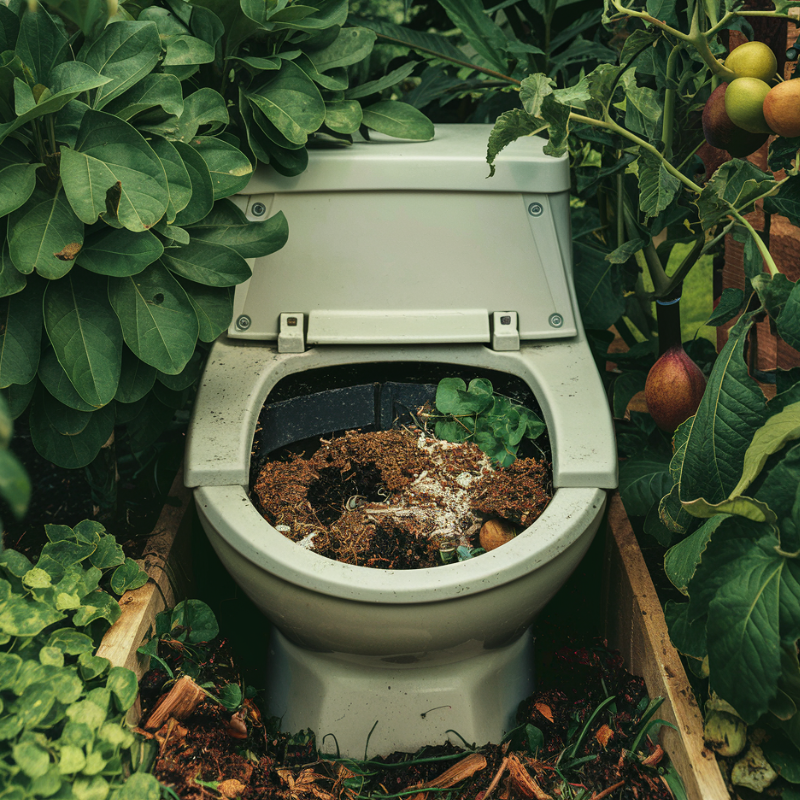
Pros and Cons of Dry Flush Toilets
Advantages of Dry Flush Toilets
- Easy Installation and Maintenance: Dry flush toilets have a relatively straightforward installation process and require less maintenance compared to composting toilets. They are well-suited for tiny homes, RVs, and boats where space is limited.
- Familiarity and Convenience: The operation of dry flush toilets is similar to traditional flush toilets, providing a familiar and convenient experience for users.
- Odor Control: By separating liquid and solid waste, dry flush toilets can effectively minimize odor issues, making them a more user-friendly option in tight living quarters.
Disadvantages of Dry Flush Toilets
- Waste Disposal: While dry flush toilets reduce water usage, they still generate solid waste that needs to be properly disposed of or composted, which may not be ideal for some off-grid or environmentally conscious individuals.
- Energy Requirements: Some dry flush toilet systems rely on electricity or vacuum pumps to function, increasing energy consumption and potentially making them less suitable for completely off-grid situations.
- Higher Upfront Costs: Dry flush toilets can have higher initial costs compared to composting toilets, especially for more advanced or automated systems.
Dry flush toilets offer advantages such as easy installation, familiarity, and effective odor control, making them a practical choice for tiny homes and RVs. However, they also have drawbacks, including waste disposal requirements, potential energy needs, and higher upfront costs. Carefully weighing these factors against individual priorities and circumstances is crucial in determining if a dry flush toilet is the ideal solution.
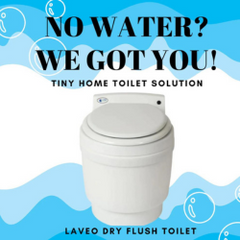
Dry Flush Toilet Bundles
Ready to check out some of the best deals? Below are some of the ones we've built, unique to our store to offer you the best deal!

Laveo Dry Flush Mega Pack
The Mega Pack is your best buy. It includes 17 Refill Cartridges and 5 bottles of pee powder for over $100 in savings.
Starts at $1350
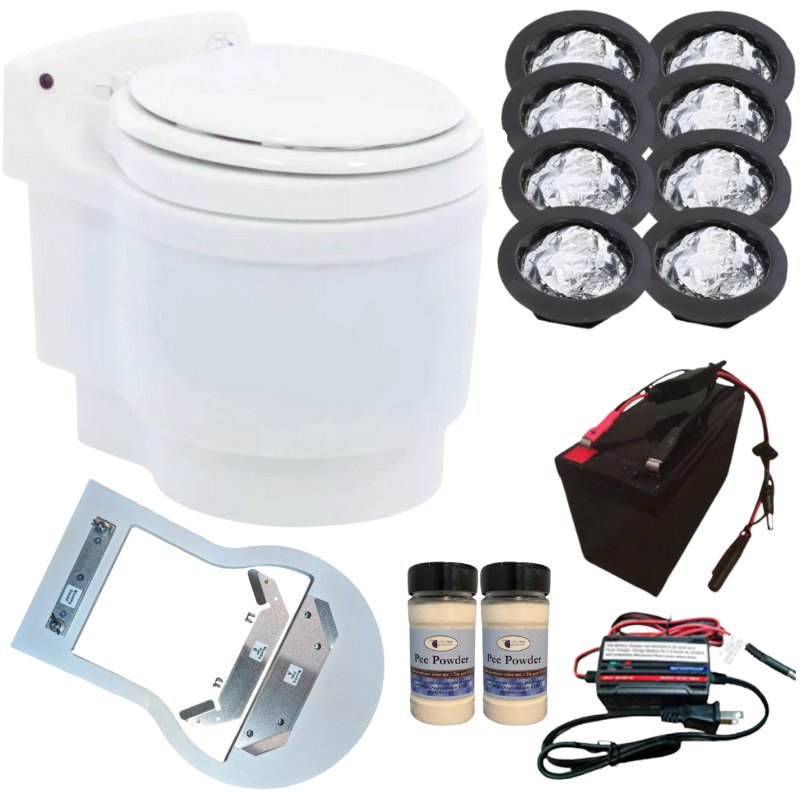
Blackwater to Dry Flush Conversion Pack
Are you over ending your camping trip with a disgusting trip to down blackwater lane? This Pack is your ticket to a simple and sanitized restroom reset.
Starts at $1250

Laveo Dry Flush Toilet
Looking for the easiest way to get started? This is the easy button - no frills, no extras, just the toilet, your choice of power options, and a few refills to get you started.
Starts at $995
Conclusion:
In conclusion, composting toilets and dry flush toilets each offer unique benefits and drawbacks when it comes to providing an alternative sanitation solution. Composting toilets are environmentally friendly, as they break down waste into compost using natural processes. However, they can be more complicated to operate and maintain.
Dry flush toilets, such as the Laveo Dry Flush Toilet, are easy to use, clean, and maintain, but they rely on plastic bags for waste containment, which raises environmental concerns.

When deciding which type of toilet is best for a particular situation, it's essential to consider factors such as accessibility, convenience, environmental impact, and personal preferences. Composting toilets may be more suitable for those who prioritize sustainability and long-term use, while dry flush toilets are a great option for those who value ease of use, cleanliness, and portability.
The Laveo Dry Flush Toilet is a highly recommended option for those in need of a portable, waterless, and odorless toilet solution. Its user-friendly design, effective waste containment system, and versatility make it an excellent choice for a variety of situations where traditional plumbing is unavailable or impractical. By considering the pros and cons of each type of alternative toilet, individuals can make an informed decision and select the best option for their specific needs.
Other Content about Composting or Dry Flush Toilets
Want to learn more about Composting or Dry Flush Toilets? Here's a few suggestions:


Leave a comment